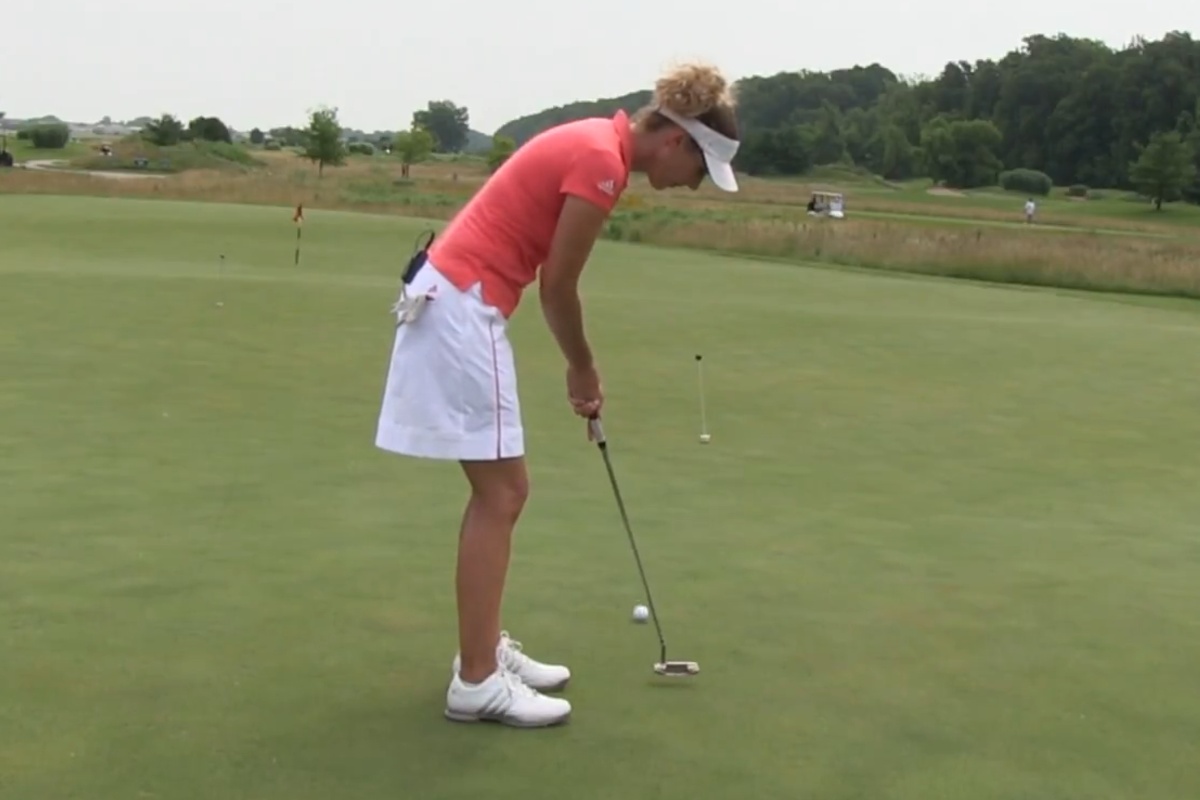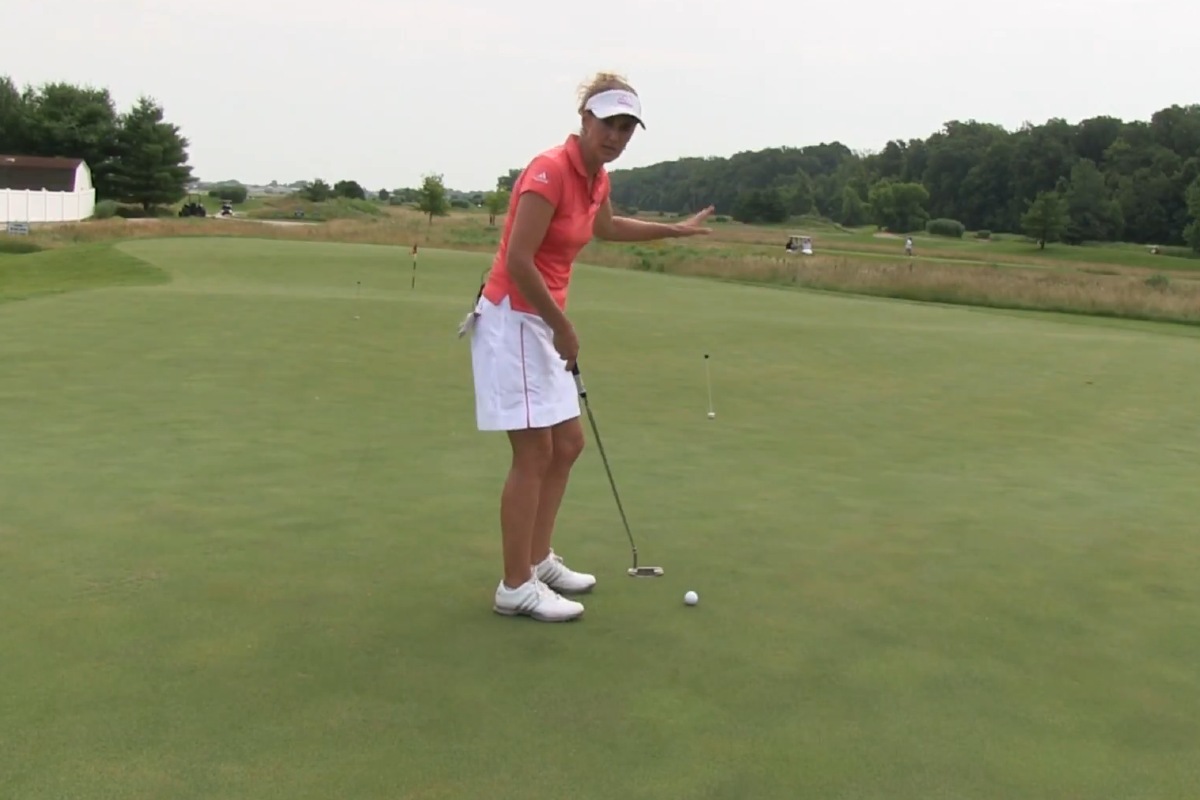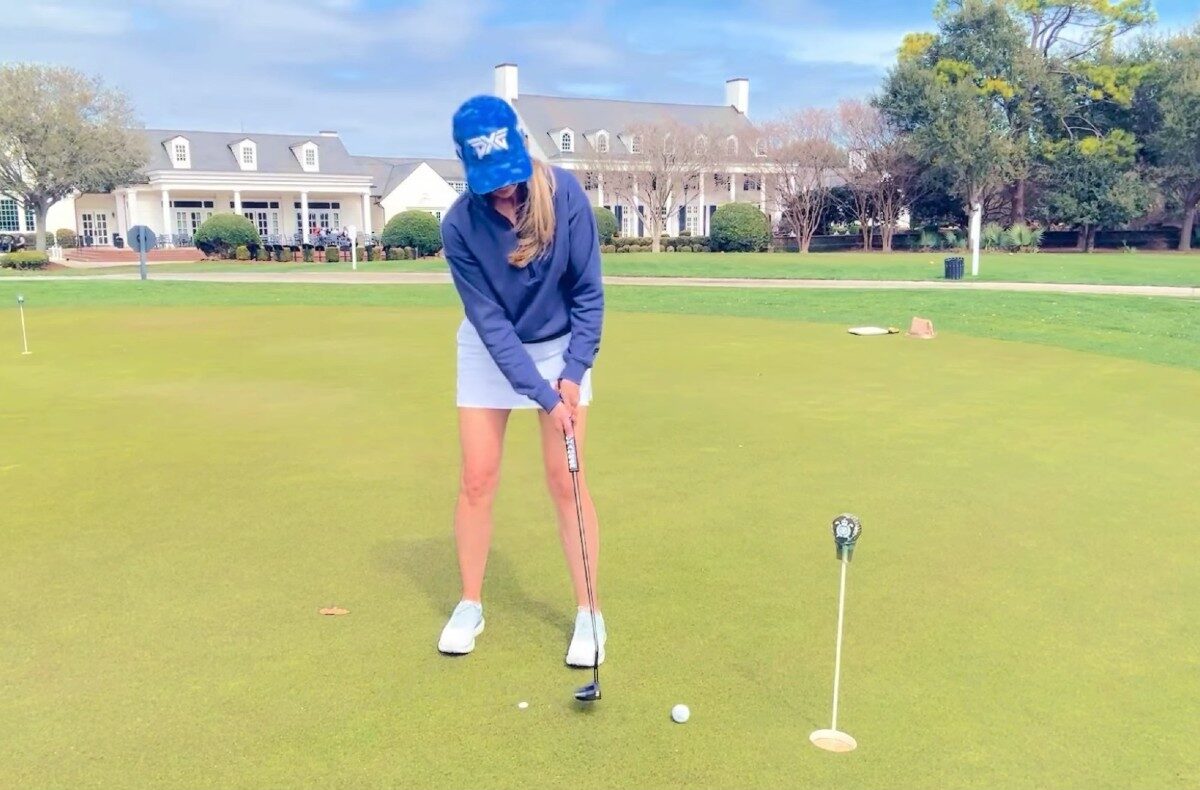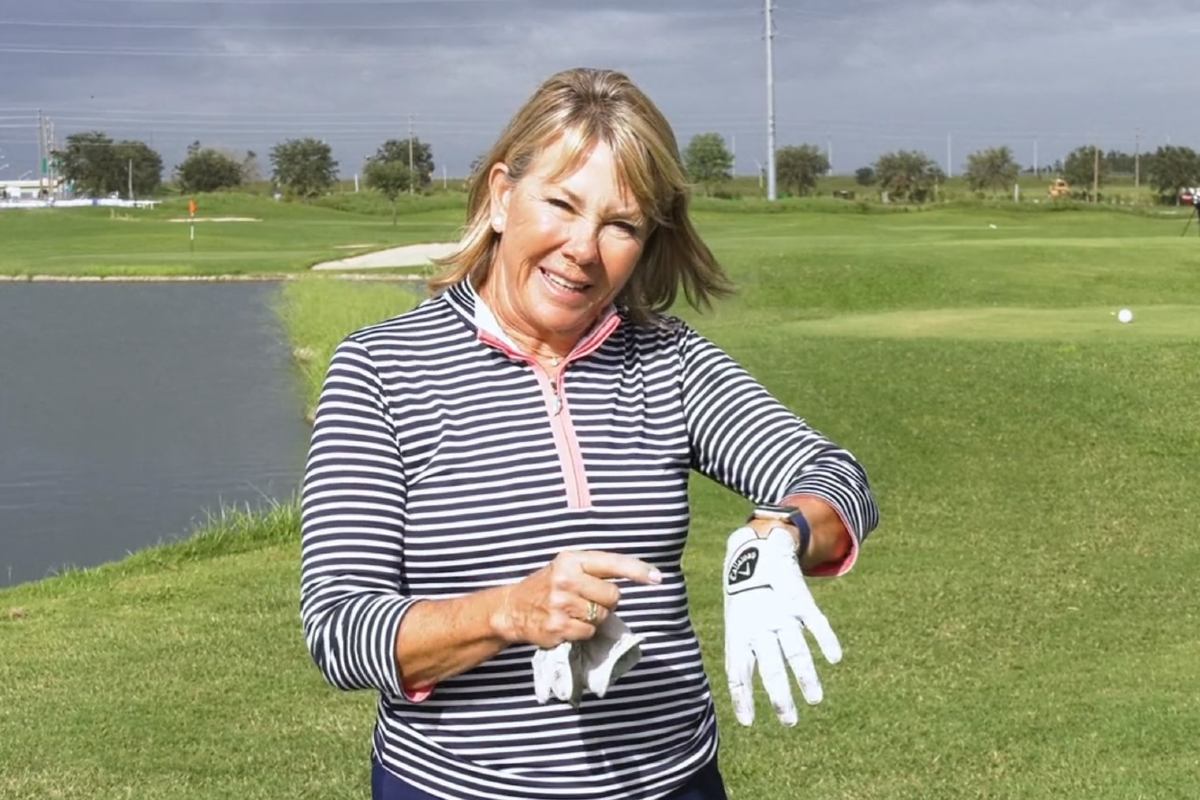The dreaded downhill putt. Is it going to turn into the slippery snake (3-putt)? Will you get lucky and drain it on your first attempt? You probably fear downhill putts much more than uphill and for good reason. Research shows that downhill putts are much tougher for the average player and are 3 putted way more often then uphill.
The problem of course is speed. If you miss an uphill putt you probably just leave it a bit short or overshoot the hole by a foot or less. In my experience, it’s much rarer for everyday golfers to put too much speed on an uphill putt. Leaving it short is way more common. The result then is simply a short uphill tap in which is maybe one of the easiest shots in golf. With a downhill putt, however, if you misjudge the speed your ball can roll forever leaving you a lengthy recovery putt. Judging how hard to hit the first putt is a real challenge and other than going to the practice green before the round and warming up with a bunch of downhill putts, there are things you can do on the golf course to better your chances of getting the right speed on your first attempt.

Properly analyzing a slippery downhill putt on the green is just a matter of taking a few extra precautionary steps when going through your pre-putt routine. The first step is to have a pre putt routine to begin with so I’m assuming you do, but a few of these tips may give you something to add if you aren’t’ already incorporating them:
The Walk Around
This is perhaps one of the easiest things to do that will make a huge difference in your read of the putt. Unfortunately, it is something very few amateurs do. I’ve found in lessons that the reason golfers are hesitant to do this is fear of being to slow and taking too much time. Note however that once you get the hang of this it will take you no more than 30 seconds and it si simply not something you can avoid if you want to make a lot of putts. It’s all about being prepared and being at your ball when it’s your turn to go. If you are then this extra 20-30 seconds won’t hold anybody up.
To perform this step simply walk to the right of the hole, around the back and then come back on the left side making a full circle around the cup. As you walk feel your feet. Which one has more pressure on it? If you are feeling more on your left foot for instance then you know the green is breaking that way as your left foot would be more downhill. Be sure to make a squat on the opposite side of the hole and read it from there because in my opinion this actually gives you a better read than looking from where your ball lies.
Not only should you be feeling the slop with your feet and reading it from the other side, but as you walk this gives you a good opportunity to look for any old ball mark, spike marks or imperfections that could affect the putt. If you are able to look at the grass around the cup to see if you can tell which way the grain is growing. That will help you determine whether or not it’s with you which will add even more speed or against you which might hold the putt up a bit.
A Realistic Rehearsal
When making your practice strokes try to make them an exact rehearsal of what you plan to do when you hit the ball. This means for a 40 foot putt making a sizeable backstroke and follow through and for a short putt making a short pendulum. It also means monitoring the amount of effort or pressure you putt into the swing so you don’t hit it too hard. You need to feel the right amount of power in your practice strokes consistently first before stepping up to hit the putt.
Many golfers lack awareness when they are making their practice strokes and they don’t match what they actually want to do when they are standing over the putt. This basically makes their practice swings a complete waste of time. Carefully monitor the length of your backstroke to help control the speed. Some downhill putts are so speedy that you barely even have to breath on the ball to get it going so you may hardly need much of a backswing at all.

Miss it on the High Side
You’ve probably heard people call the high side of the hole the “pro side” and the low side of the hole the “amateur side.” This is simply because pros know that to always give the ball a chance they have to keep it up on the high side. If your ball misses on the low side it never got up enough onto the break line. Furthermore on slick downhill putts if your putt misses low on the break it’s going to pick up speed and break dramatically off of the line making you roll it even further away from the hole. Missing high however, will help the putt to slow up and leave you with a shorter second putt (hopefully not too downhill again).
As you can see these are 3 extra easy precautions to take to help you control those super fast downhill putts. Putting successfully is easily as much about preparation and getting a good read on the putt as it is about making a good stroke. Once you get into a good routine and make these steps a habit, you will not only take very little time to perform them, but you will putt more consistently and with more control.
The Situation:
You are uneasy with slick downhill putts.
The Solution:
To make controlling your downhill putts easy make sure to take the time to walk around the hole while lining up your putt. Feel the slope of the ground under your feet to help determine which way the ball will break. Take a peek at the putt from the opposite side of the hole by squatting down to look at your line. Look for spike marks, ball marks or other imperfections that might affect your putt. Next, make your practice strokes realistic rehearsals using the length and power that you plan on applying to the putt. Finally miss the putt on the high side. This will help keep the putt slower and more controllable if you miss, besides giving it a chance to go in.






